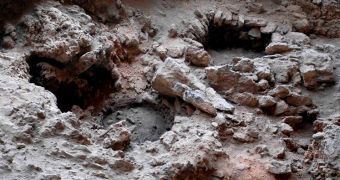Experts at the University of Connecticut (UC) say that they recently identified what could very well be the traces of the oldest feast in the world. The meal may have been eaten 12 millennia ago.
According to the team, which was led by associate professor of anthropology Natalie Munro, it would appear that people used to gather around and feast on various occasion even eons ago.
Feasting is one of the most humane traits in existence today. The behavior has not been observed in other species. Naturally, many animals hunt in packs and cooperate, but they do not consume food in large groups and for ceremonial purposes.
Even today, we gather around the table for various holidays, birthdays, for weddings, receptions and so on. The new evidence collected from Israel show that so did our ancestors, but most likely for commemorations of the recently deceased.
In other words, in the old days, people tended to accompany burials with spiritual rituals, of which feasting was a central element.
The conclusion was drawn from studies of fossilized food remains, discovered at the ancient Hilazon Tachtit Cave burial site near Karmiel, Israel.
At the site, researchers found large numbers of remains from tortoise and wild cattle, all of which had been purposefully butchered. It is now believed that the meat was consumed during feasts.
The data also seems to indicate that the people would gather at the cave only on special occasions, and that they did not live there around the year.
“Feasting […] is one of humanity's most universal and unique social behaviors. Our paper documents the first good evidence for feasting in the archaeological record that we know of,” Munro explains.
She and her team published the full results of their findings in the August 30 early online issue of the esteemed journal Proceedings of the National Academy of Sciences (PNAS).
The group believes that the people to whom the remain belong were the Natufians, who inhabited the area around Karmiel, near the Mediterranean Sea, between 14,500 and 11,500 years ago.
“Sedentary communities require other means to resolve conflict, smooth tensions and provide a sense of community. We believe that feasts, especially in funerary contexts, served to integrate communities by providing this sense of community,” Munro reveals.
The new study was supported via grant money from the Behavioral and Cognitive Sciences Division of the US National Science Foundation (NSF).

 14 DAY TRIAL //
14 DAY TRIAL //